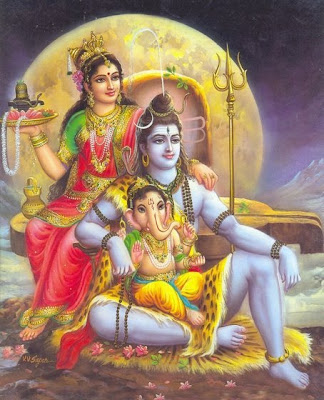 |
| Lord Ganesha |
The significance of Ganesha Chaturthi
Ganesha Chaturthi is one of the foremost and most important festivals for Hindus of India and many other countries around the world. It is celebrated during the Shukla Chaturthi (fourth day of waxing moon) of Hindu month of Bhaadrapada (this falls between August and September). It is usually celebrated for 10 to 12 days and ends on Ananta Chaturdashi.
 |
| Lord Vinayaka |
The celebrations of Ganesha Chaturthi
Celebrations take place with great pomp and joy in both homes and as a community as well. In many places, Lord Ganesha is venerated with Shlokas and Stotras (prayers or hymns). At South Indian homes, a Turmeric image of Lord Ganesha is made and worshipped. As a community throughout India, several colourful clay statues of Lord Ganesha are bought from local sculptors and worshipped. Coconuts, jaggery, 21 Modakas, Dhub/Arugampul (Bermuda grass), 21 Durvas (trefoil blades of grass) and red flowers are offered.
 |
| A statue of Lord Ganesha during Ganesha Chaturthi |
 |
| Decorated idol of Lord Ganesha at Siddhivinayaka Temple, Mumbai |
Temples, especially those dedicated to Lord Ganesha, are beautifully decorated and special worship takes place with several devotees flocking the temples. There are several cultural programmes like theatre, singing, dancing which actively take place. Modaka is the main food item during this festival - Lord Ganesha often holds it (sometimes in a cup) in his lower left hand. It is a sweet dish made from rice or wheat flour and stuffed with condiments like grated coconut, dry fruits, jaggery, etc. The festival is greatly awaited for and cherished by all.
The iconography of Lord Ganesha
 |
| Lord Vighneshwara |
- His elephant head symbolises the great amount of knowledge he possesses, and also his royalty, power and nobility.
- His pot belly shows his greatness and tolerance as well as omnipresence to containing the whole universe in him.
- His four hands symbolise power and willingness to help.
- His left tusk in his lower right hand stands for strength and kindness to provide refuge, the Modakas in his left lower hand stand for attainment of sublime knowledge and hence joy.
- His broken tusk exemplifies the nobility to sacrifice for the cause of a great deed. It was broken to kill many demons and also write the great epic Mahabharata.
- The noose (Pasha) in his left upper hand stands for his ability to bring anything under his control and the axe (Ankusha) in his right upper hand stands for grace and ability to remove obstacles.
- The Mooshaka (mouse) vehicle signifies the unbiased nature of the Lord and his unending blessings to all good people irrespective of their status. It also represents worldly desires which are overcome by devotion to the supreme. The mouse was actually a demon Gajamugaasura who wisely surrendered to Lord Ganesha.
There are several histories to Ganesha Chaturthi. How was Lord Ganesha created?
The most common story suggests that his mother Goddess Parvati wanted an attendant who would heed her and not allow Lord Shiva, her husband, in while she did not want him to come in. So, before bathing, she created a son of hers using sandalwood paste and made him stand guard. Her son and Lord Shiva were unaware of each other and a fight ensued between both. Lord Shiva's army, his Gana, all the Gods and the Trimoorti (Trinity) fought against Parvati's son but lost because he had Parvati's power. Parvati was shocked to know of the cruelty of the Gods by attacking a small boy and sent her angry forms Durga and Kali to fight the Gods. Durga and Kali defeated the Gods and finally had to leave for a battle, so gave the boy a stick with their power.
 |
| Lord Shiva and Goddess Parvati with Child Ganesha |
 |
| Lord Ganesha and the moon |
Ganesha Chaturthi is indeed a day to enjoy, have a great day!